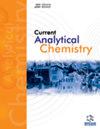A Polyacrylate Cotton-based Pipette Tip Micro-solid-phase Extraction Technique Coupled with High-performance Liquid Chromatography for Carvedilol Determination in Aqueous Media
IF 1.7
4区 化学
Q3 CHEMISTRY, ANALYTICAL
引用次数: 0
Abstract
Introduction: In this work, a polyacrylate polymer was synthesized into a pipette tip containing cotton fibers and used to extract carvedilol from water and urine samples. Methods: A high-performance liquid chromatography-ultraviolet detection method was developed, which demonstrated the suitability of the purposed pipette tip micro-solid-phase extraction device. Factors affecting the fabrication procedure and polymer quality were studied and optimized. In the next step, the sample preparation process (including extraction and desorption) was fully optimized, and the optimized method was validated. Results: A coating with suitable mechanical and chemical stability was achieved. Its structure was successfully characterized by Fourier transform infrared spectroscopy and scanning electron microscopy. Within-batch and between-batch fabrication reproducibility were obtained at 3.0 and 9.0 %, respectively. The developed method displayed a limit of detection of 1.1 µg L-1 when 1.5 mL of sample was processed, and it was linear in the concentration range of 3.3-350 µg L-1 with LLOQ of 5 µg L-1 . The polyacrylate cotton-based pipette tip was finally used to extract carvedilol from aqueous media with acceptable recoveries of 92-106%. Conclusion: The proposed method is simple and fast and requires low sample volumes. In addition, this method has been evaluated in terms of greenness with three different tools, and the evaluation results with all three tools have shown that this method is one of the green and environmentally friendly methods.基于聚丙烯酸酯棉花的移液管吸头微固相萃取技术与高效液相色谱联用测定水介质中的卡维地洛
简介本研究将聚丙烯酸酯聚合物合成到含有棉纤维的吸头中,用于从水和尿液样品中提取卡维地洛。提取方法建立了高效液相色谱-紫外检测方法,证明了吸头微固相萃取装置的适用性。对影响制造程序和聚合物质量的因素进行了研究和优化。下一步,对样品制备过程(包括萃取和解吸)进行了全面优化,并对优化后的方法进行了验证。结果:获得了具有适当机械和化学稳定性的涂层。傅立叶变换红外光谱和扫描电子显微镜成功地对其结构进行了表征。批内和批间的制造重现性分别为 3.0% 和 9.0%。所开发的方法在处理 1.5 mL 样品时的检测限为 1.1 µg L-1,在 3.3-350 µg L-1 浓度范围内线性良好,最低检测限为 5 µg L-1。最后使用聚丙烯酸酯棉基吸头从水介质中提取卡维地洛,回收率为 92-106%。结论所提出的方法简单快捷,所需样品量少。此外,还利用三种不同的工具对该方法的绿色性进行了评估,三种工具的评估结果均表明该方法是绿色环保的方法之一。
本文章由计算机程序翻译,如有差异,请以英文原文为准。
求助全文
约1分钟内获得全文
求助全文
来源期刊

Current Analytical Chemistry
化学-分析化学
CiteScore
4.10
自引率
0.00%
发文量
90
审稿时长
9 months
期刊介绍:
Current Analytical Chemistry publishes full-length/mini reviews and original research articles on the most recent advances in analytical chemistry. All aspects of the field are represented, including analytical methodology, techniques, and instrumentation in both fundamental and applied research topics of interest to the broad readership of the journal. Current Analytical Chemistry strives to serve as an authoritative source of information in analytical chemistry and in related applications such as biochemical analysis, pharmaceutical research, quantitative biological imaging, novel sensors, and nanotechnology.
 求助内容:
求助内容: 应助结果提醒方式:
应助结果提醒方式:


